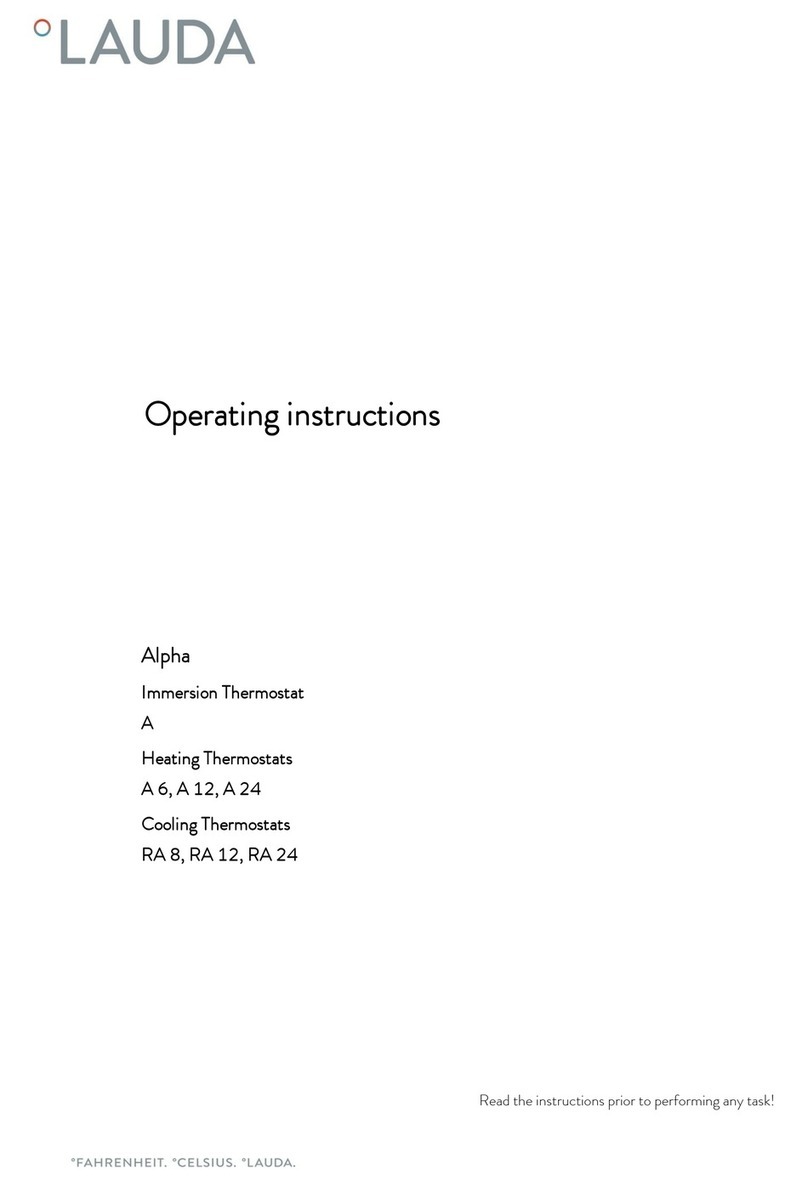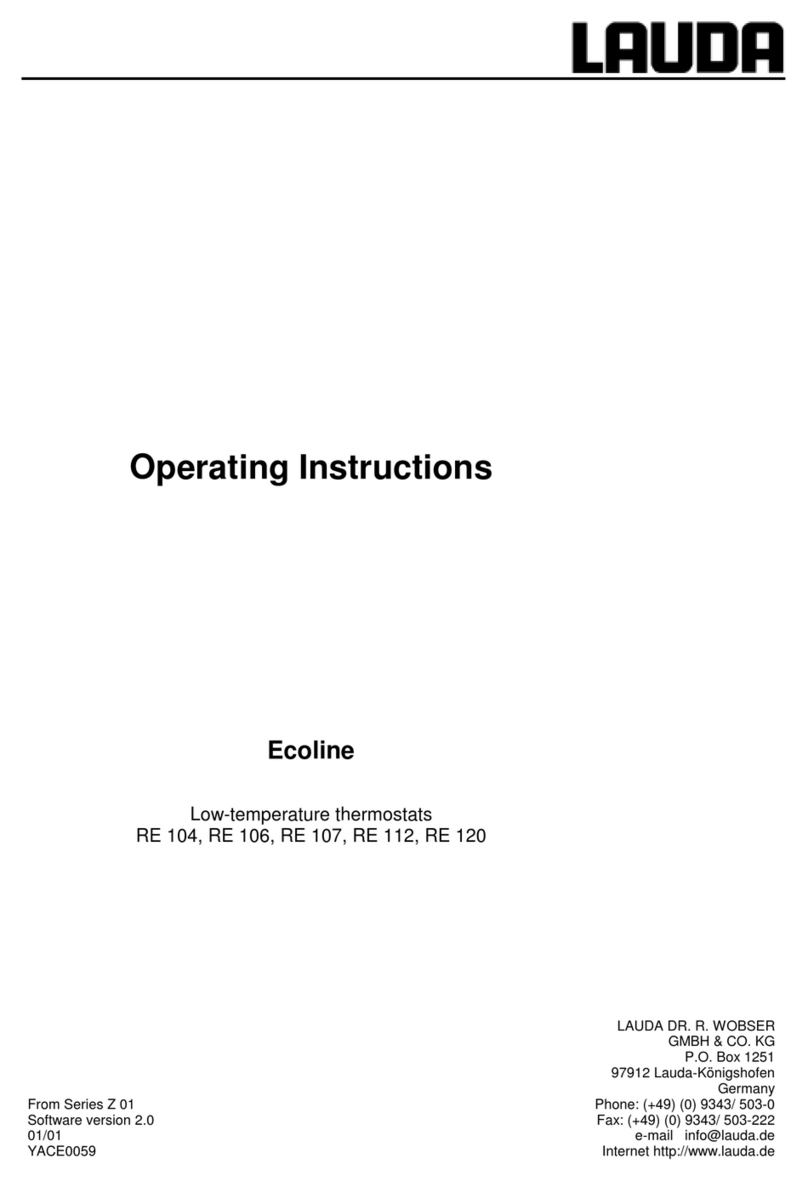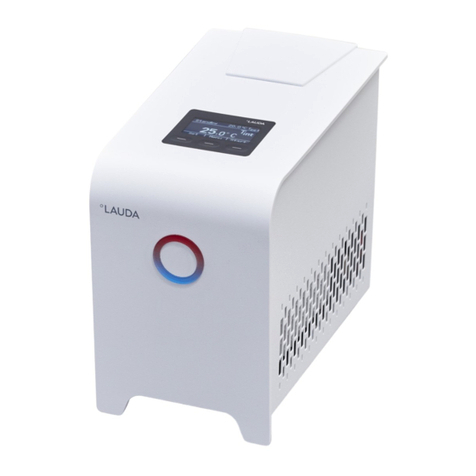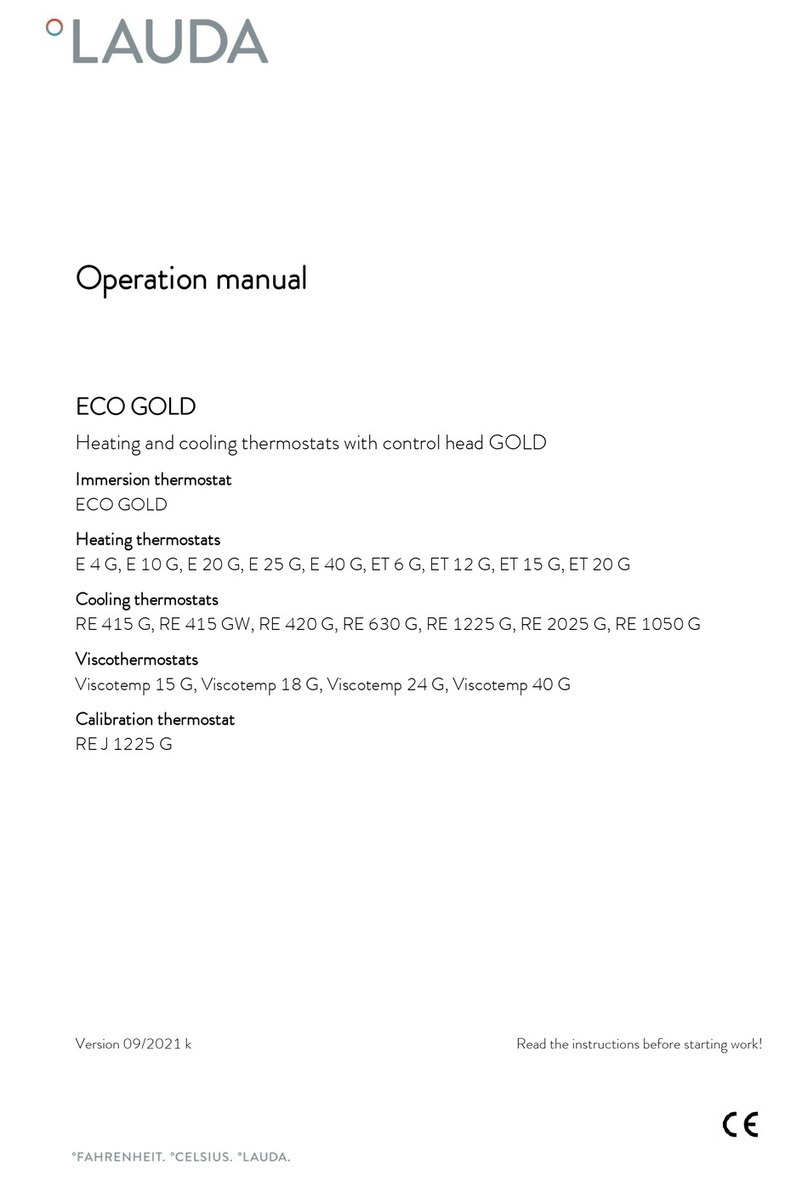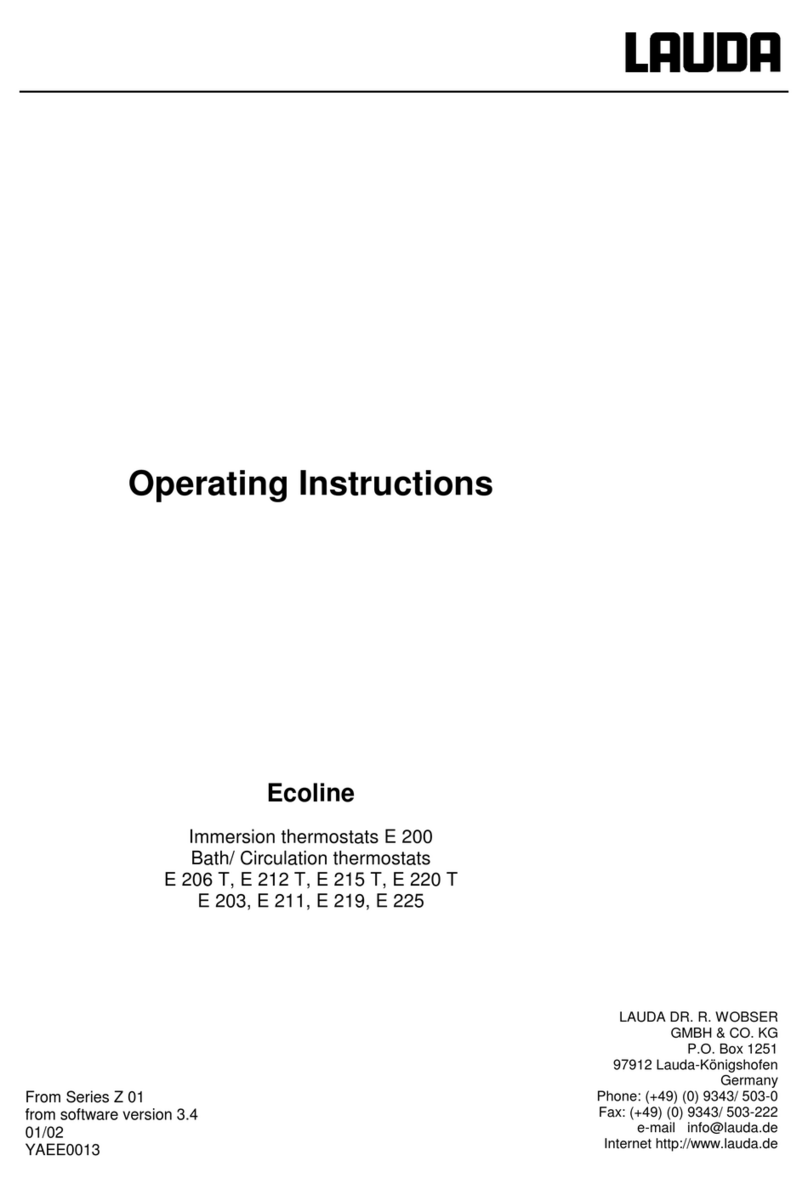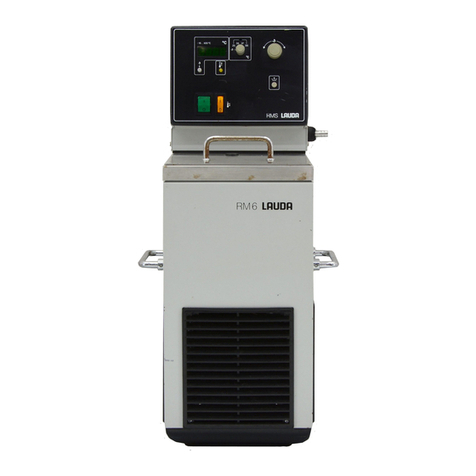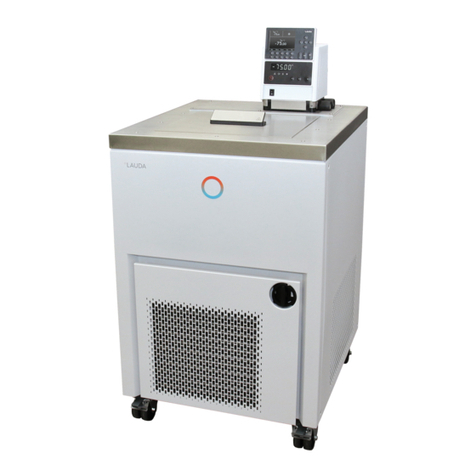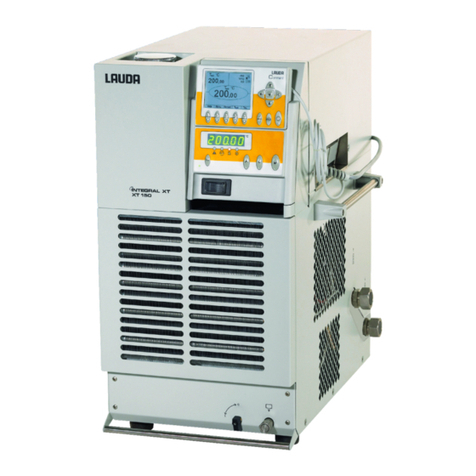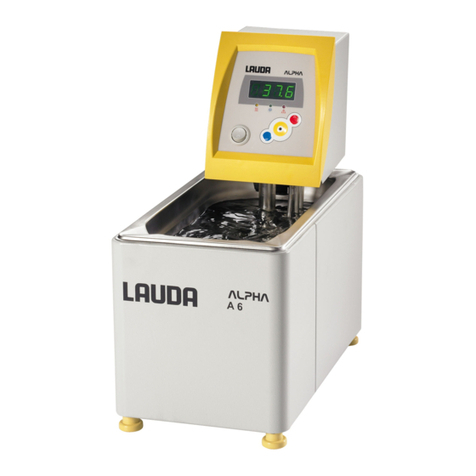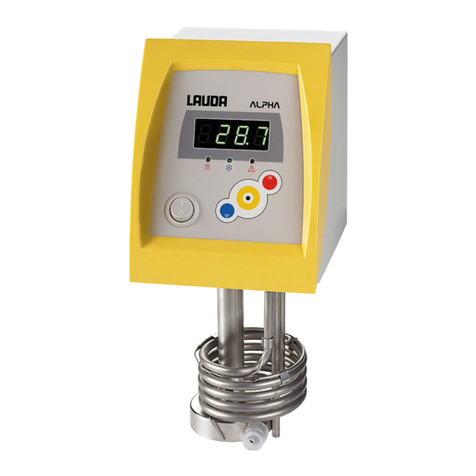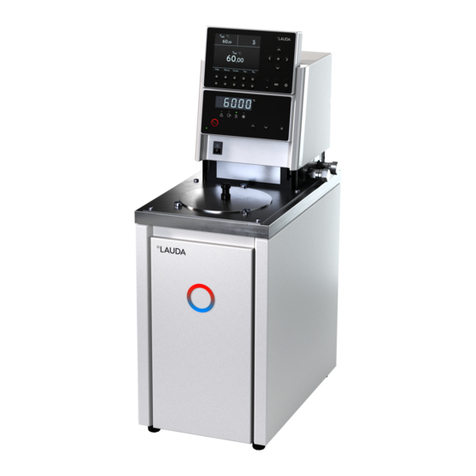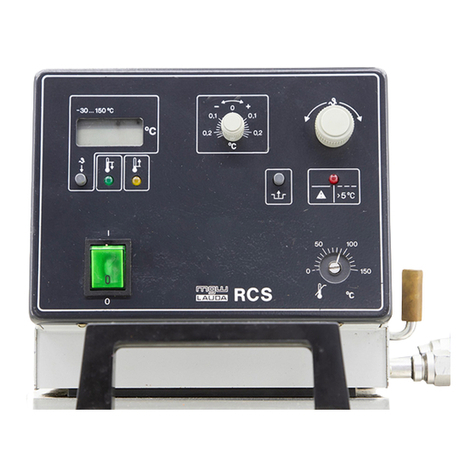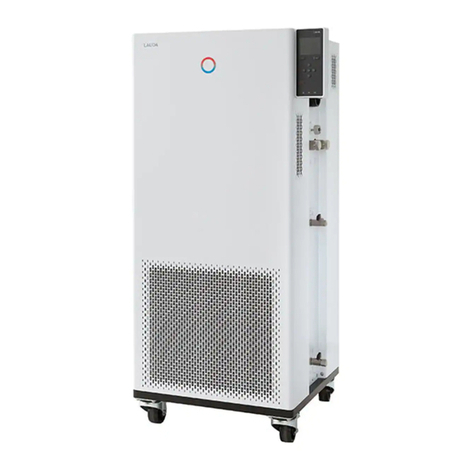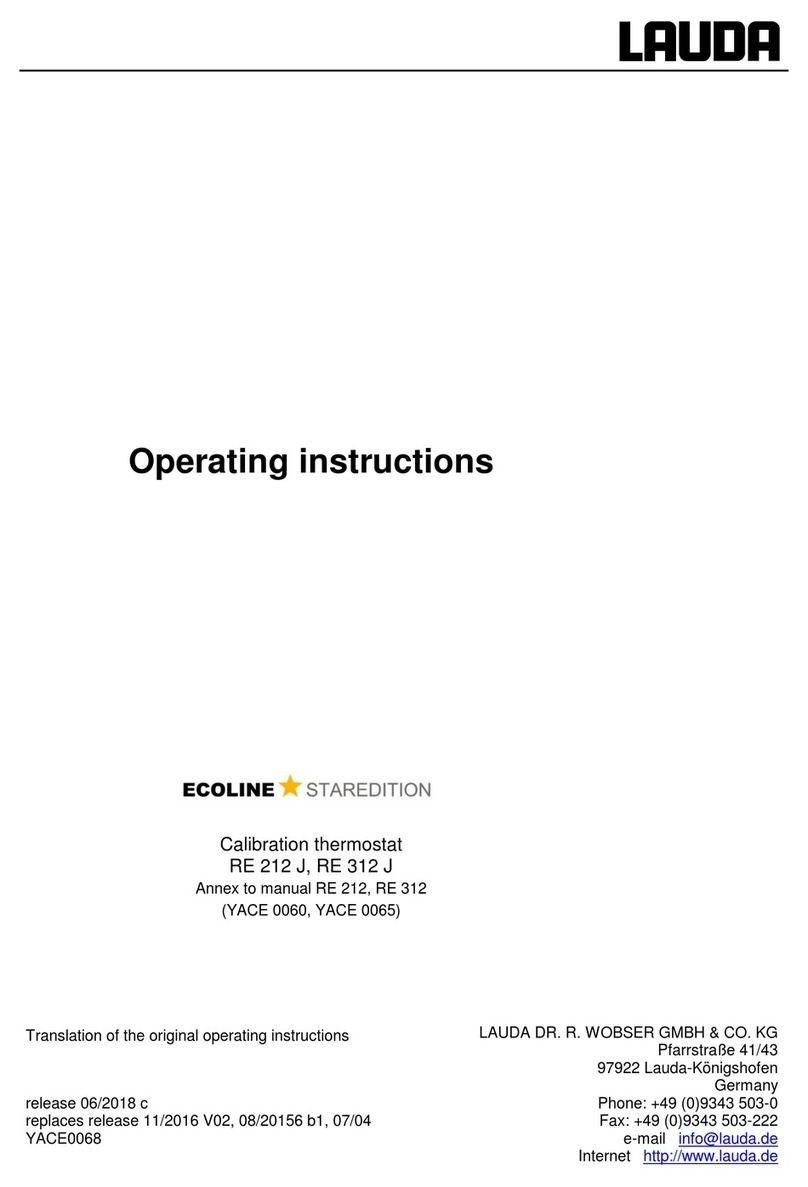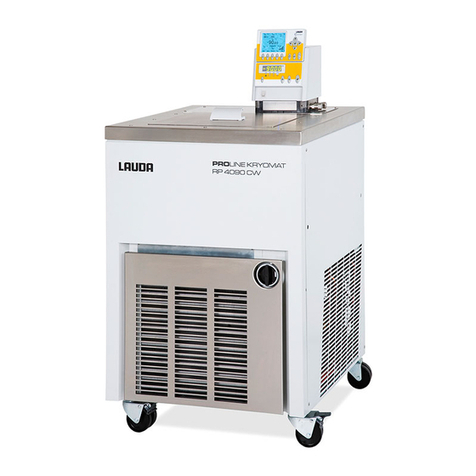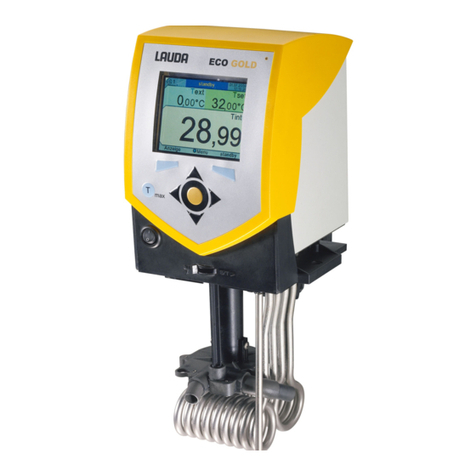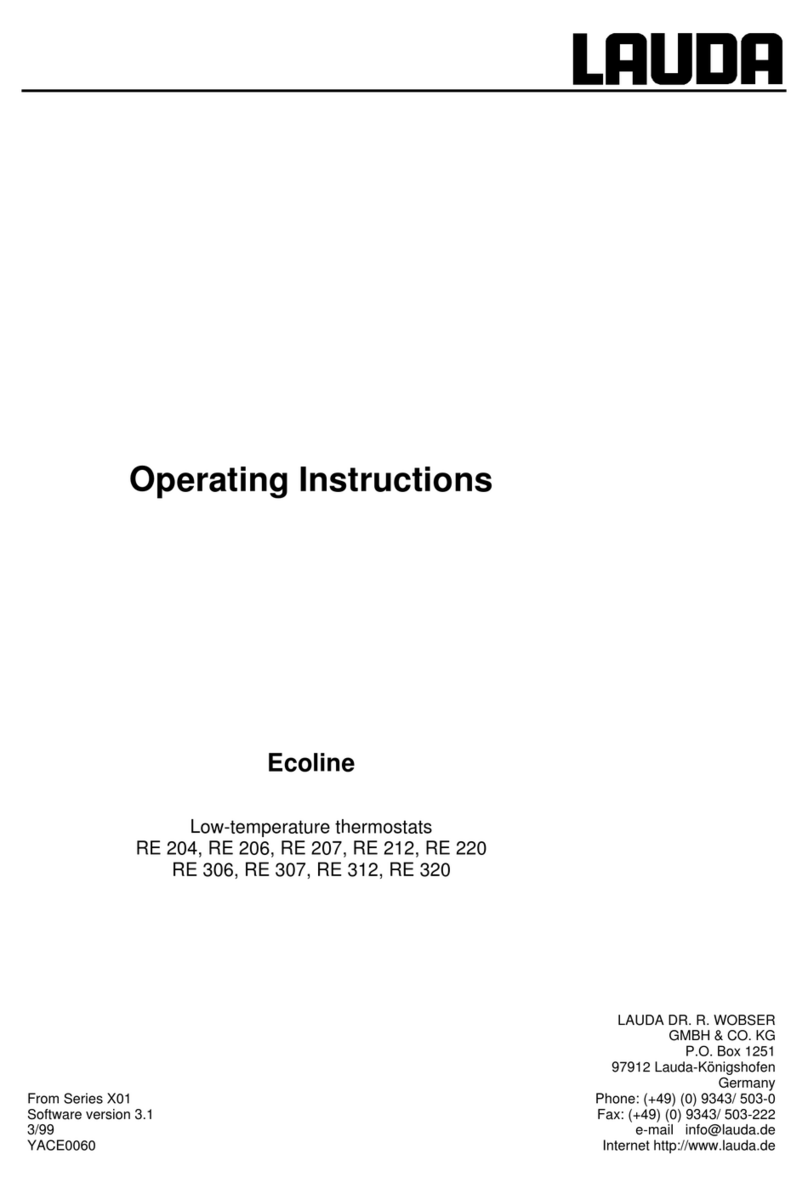
II
1 BRIEF OPERATING INSTRUCTIONS.......................................................................................1
2 CONTROL AND FUNCTIONAL ELEMENTS.............................................................................3
3 UNIT DESCRIPTION..................................................................................................................4
3.1 Unit types ...........................................................................................................................4
3.2 Pumps.................................................................................................................................4
3.3 Temperature indication, control, and safety circuit........................................................ 4
3.4 Materials.............................................................................................................................5
3.5 Refrigeration system.........................................................................................................5
3.6 Serial Interfaces RS 232, RS 485 ......................................................................................6
3.6.1 RS 232 Interface ............................................................................................................................6
3.6.2 RS 485 Interface ............................................................................................................................8
3.6.3 Write commands (data commands to the thermostat)............................................................10
3.6.4 Read commands (data requested from thermostat)................................................................11
3.6.5 Error messages...........................................................................................................................12
3.6.6 Driver software for LABVIEW®...................................................................................................12
4 UNPACKING............................................................................................................................13
5 PREPARATIONS.....................................................................................................................14
5.1 Assembly and setting up................................................................................................. 14
5.2 Filling and emptying........................................................................................................15
5.3 Bath liquids and hose connections................................................................................ 17
5.4 Connection of external circuits ......................................................................................19
6 STARTING UP.........................................................................................................................20
6.1 Connection to the supply................................................................................................20
6.2 Switching on .................................................................................................................... 20
6.3 Setpoint selection (level 0) .............................................................................................. 21
6.4 Menu functions................................................................................................................22
6.4.1 Refrigeration system (level 1).....................................................................................................22
6.4.2 Pump output................................................................................................................................23
6.4.3 Setting the setpoint resolution..................................................................................................24
6.4.4 Parameters...................................................................................................................................25
6.4.4.1 Setting the proportional band of the PID-controller ...................................................................26
6.4.4.2 Setting the reset time of the PID-controller................................................................................27
